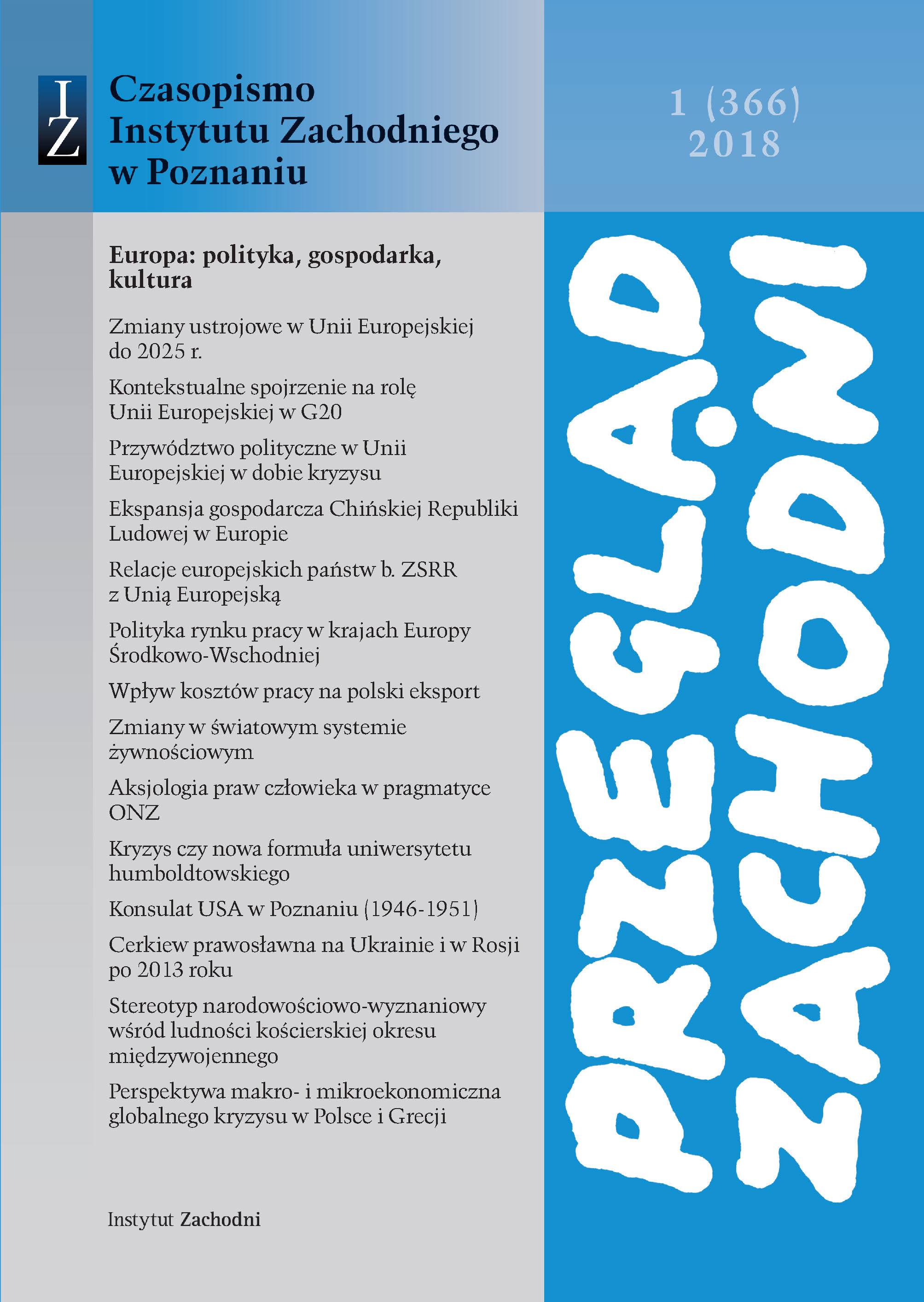Determinanty aktywnej polityki rynku pracy w krajach
Europy Środkowo-Wschodniej
Determinants of Active Labour Market Policy in Central and Eastern European countries
Author(s): Katarzyna NagelSubject(s): Human Resources in Economy
Published by: Instytut Zachodni im. Zygmunta Wojciechowskiego
Keywords: labour market; Active Labour Market Policy; panel data study; Central and Eastern European countries
Summary/Abstract: The article shows the determinants of expenditure on Active Labour Market Policy in the new EU members in 2004-2015. Reviewed theoretical literature of the subject and relevant empirical observations examine this problem mainly in the highly developed countries. The EU expansion to the countries of Central and Eastern Europe raises the question of the extent to which the shape and expenditure on Active Labour Market Policy are influenced by globalization and the integration process, and to what extent they are the outcome of internal socio-economic determinants.The aim of the article is to identify the determinants of expenditure on Active Labour Market Policy in Central and Eastern Europe (CCE) in the years 2004-2015. The article opens with an overview of the theoretical literature and research on the determinants of Active Labour Market Policy followed by a classification of the latter. This part of the analysis is theoretical and based on the literature of the subject. In the empirical part of the article, the author selects aset of partial indicators and attempts to define their impact on the expenditure on Active Labour Market Policy (ALMP expenditure as percent of GDP) and expenditure per capita on unemployed measure as percent of GDP) using basic panel data for the group of countries examined. In recent years, discussion of the issue has moved in two different directions. One group of researchers suggest that determinants of active labour market policies are convergent with those already identified for highly developed countries, which shows unification on at least a regional scale(e.g. within the EU). This approach can be contrasted with a particularistic view, which argues that CEE countries follow different and non-traditional, individual paths. The analyzed determinants appear to be relevant to the expenditure on active labour market policies in the group of countries studied. On their basis one can formulate the claim that CEE countries have a different labour marketmodel compared to other EU member states.
Journal: Przegląd Zachodni
- Issue Year: 366/2018
- Issue No: 01
- Page Range: 97-112
- Page Count: 16
- Language: English, Polish

